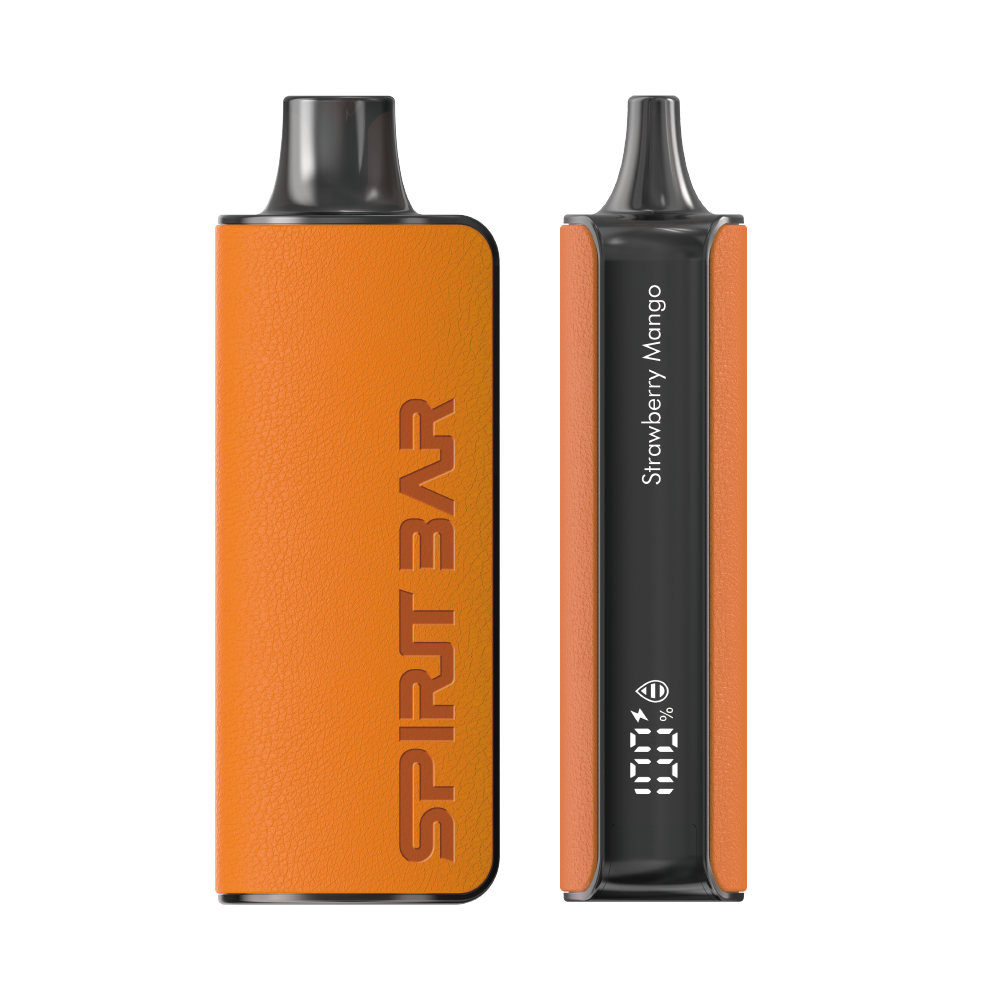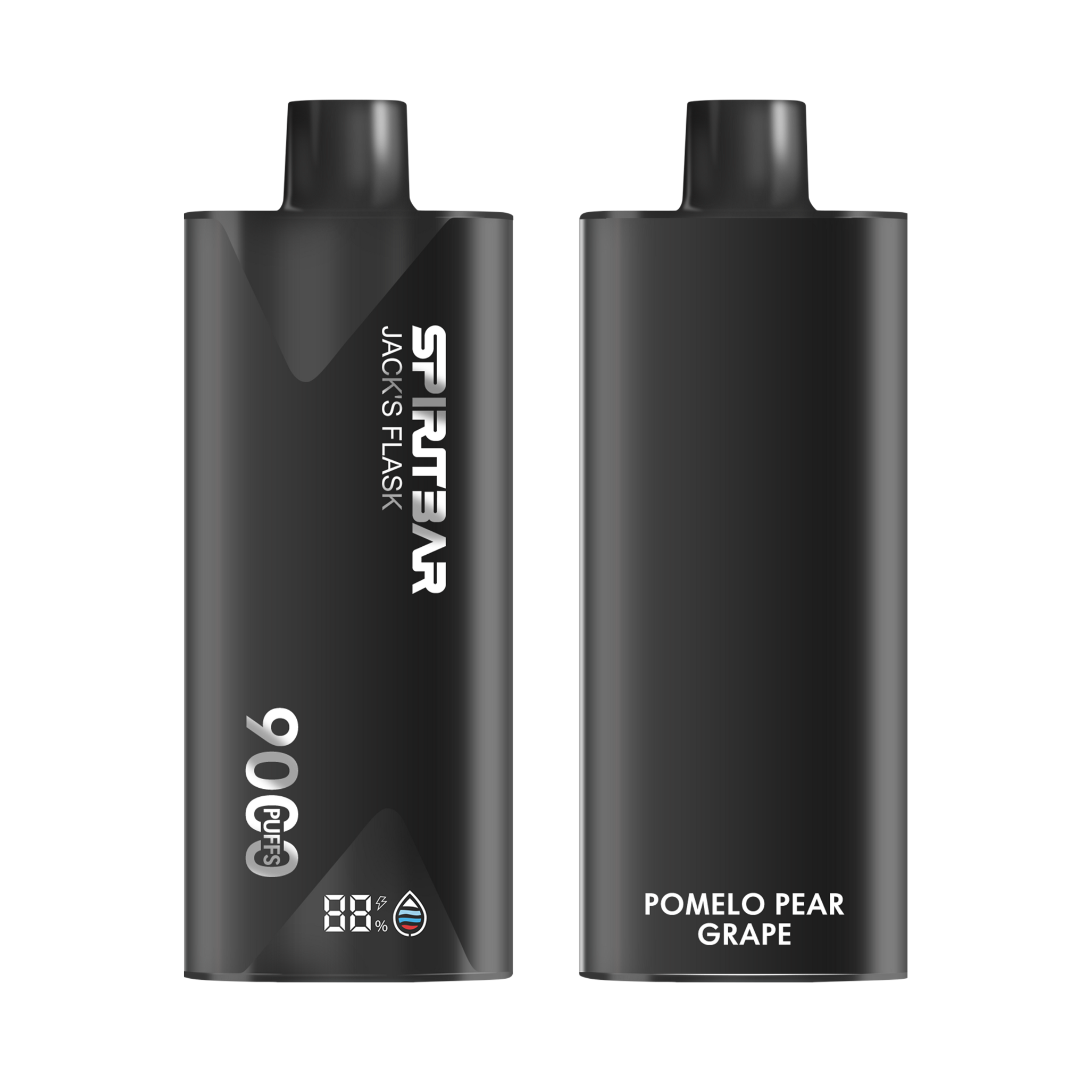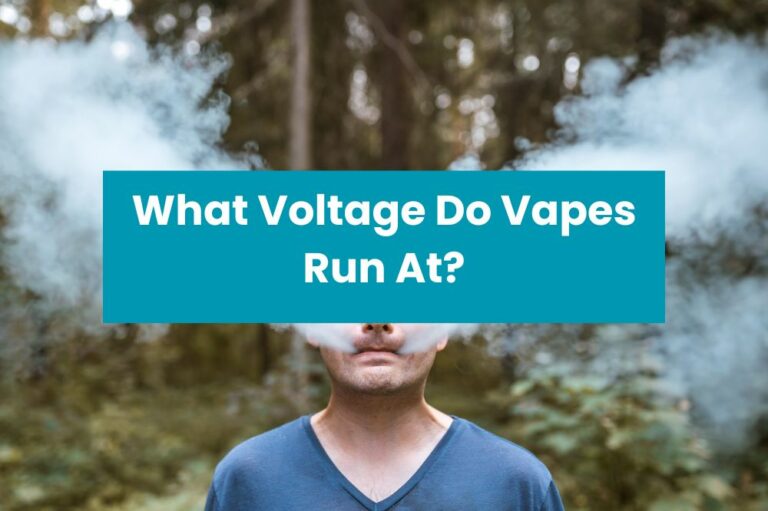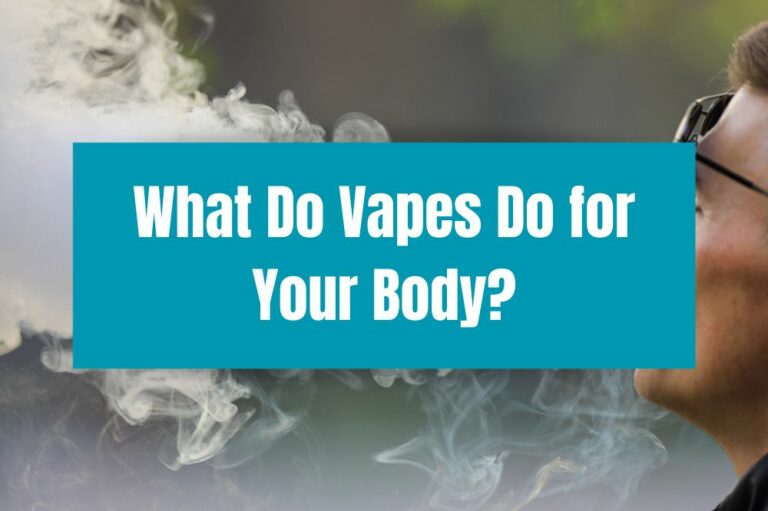What Does Airflow on Vape Do?
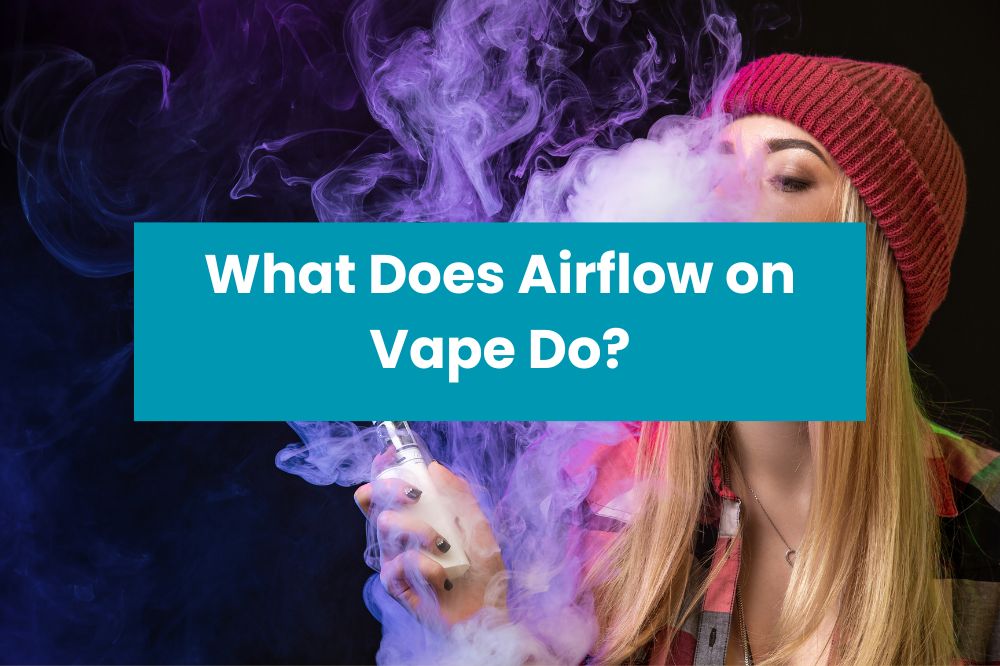
Are you curious about what airflow on a vape does? Well, you’re not alone! Airflow is an essential component of the vaping experience. It controls how much air is introduced into the vape, which can change many things in your vaping experience. For instance, airflow control can change the flavor, vapor production, the warmth of the vapor, and the feel of the vapor when inhaled.
Most devices have an adjustment ring on the tank that allows you to change the airflow manually – high and low. The higher the airflow, the cooler the vape. On the other hand, lower airflow results in a warmer vape, which can be more flavorful. Airflow control refers to a common setting found on either vape tanks or pod cartridges, which allows for a manual adjustment of the amount of air that is allowed into the tank or cartridge when a hit is fired. What may seem like tiny, insignificant adjustments can dramatically change how you experience your vapes.
In this article, we will explore the importance of airflow when you vape. We will discuss how airflow affects your vaping experience, the different types of airflow control, and how to adjust your airflow to achieve the best vaping experience. Whether you’re a seasoned vaper or a beginner, this article will provide you with valuable insights into the role of airflow in vaping. So, sit back, relax, and let’s dive into the world of vaping airflow!
Understanding Airflow in Vaping
When you vape, the airflow is a crucial factor that affects your overall experience. Airflow refers to the amount of air that travels through your atomizer when you take a puff from your e-cigarette or vaporizer. It plays a crucial role in determining the quality and quantity of vapor you produce, as well as the intensity and flavor of your vape.
SPIRITBAR Katana BP10000
- Slender, leather-textured body reminiscent of a katana handle for an authentic samurai feel
- Unique samurai-inspired e-liquid flavor - fruity yet not too sweet, with a luxurious, elegant aroma
- Powerful 650mAh rechargeable battery for extended vaping time
- Large 18ml e-liquid capacity and 10,000 puff capacity
- Advanced mesh coil and e-liquid & power display screens for optimal vaping experience
The special juice captures the essence of the samurai spirit with its rich, smoothly pulsating flavor that brings new satisfaction with every puff. The device's slender, leather-textured design evokes the grip of a samurai's katana, making this product a perfect choice for beginner vapors.
Most devices have an adjustment ring on the tank that allows you to change the airflow manually – high and low. The higher the airflow, the cooler the vape. On the other hand, lower airflow provides a warmer and more intense vape. Adjusting the airflow can also affect the flavor of your e-liquid, so it’s essential to find the right balance that suits your preferences.
There are two types of airflow control, namely bottom airflow and top airflow. Bottom airflow refers to the air intake located at the bottom of the atomizer, while top airflow is located at the top. Bottom airflow provides a more direct hit and intense flavor, while top airflow provides a smoother and cooler vape.
When you’re vaping, it’s essential to find the right airflow that suits your preferences. Too much airflow can result in a weak and flavorless vape, while too little airflow can cause a harsh and unpleasant hit. It’s recommended to experiment with different airflow settings until you find the right balance that provides you with a satisfying vaping experience.
In conclusion, understanding airflow in vaping is crucial to getting the most out of your vaping experience. By adjusting the airflow, you can control the intensity, flavor, and overall quality of your vape. Experiment with different airflow settings until you find the right balance that suits your preferences.
Importance of Airflow in Vaping
When it comes to vaping, airflow is a crucial factor that can affect your vaping experience. The airflow on a vape device controls how much air is introduced into the vape, which can change many things in your vape experience.
SPIRITBAR Jack’s Flask 9000 Puffs
- Stylish pirate flask-shaped body providing an exciting vaping experience
- Delivering up to 9000 puffs per device
- 20ml e-liquid capacity with 50mg nicotine strength for satisfying throat hit
- Specialized pirate-themed e-juice flavors for rich, swirling taste
- Premium mesh coil optimizes flavor profile for maximum vaping enjoyment
This disposable vape captures the daring spirit of the high seas with its flask styling and signature pirate e-juice flavors. The extraordinary battery life provides 9000 indulgent puffs for extended vaping pleasure. Live boldly and freely with the Jack's Flask - a legendary vaping experience fit for a pirate's adventures.
One of the most important things that airflow can change is the flavor of your vape. With more airflow, you will get a cooler vape that can often be less flavorful. On the other hand, less airflow will give you a warmer vape that can be more flavorful. Finding the right balance between airflow and flavor can take some experimentation, but it’s worth it to get the perfect vape.
Airflow can also affect vapor production, warmth of the vapor, and the feel of the vapor when inhaled. With more airflow, you’ll get more vapor production and a cooler vape, while less airflow will give you less vapor and a warmer vape. The feel of the vapor when inhaled can also change depending on the amount of airflow.
Another important thing to keep in mind is that the amount of airflow you need to get the perfect vape can change depending on the VG/PG ratio of your e-liquid, the resistance of your coil, and your vaping style, amongst other things. To get the perfect airflow, the best thing you can do is buy a tank with a really good airflow collar.
Overall, airflow is an important factor to consider when vaping. It can affect the flavor, vapor production, warmth of the vapor, and the feel of the vapor when inhaled. Experimenting with different airflow settings can help you find the perfect balance for your vaping style and preferences.
Adjusting the Airflow in Vape Devices
When it comes to vaping, adjusting the airflow is an essential aspect of your overall experience. By controlling the amount of air that flows through your device, you can customize the temperature, flavor, and vapor production to your liking. Here’s what you need to know about adjusting the airflow in vape devices.
Manual Adjustment
Most vape devices have an adjustable airflow ring on the tank that allows you to change the airflow manually. By turning the ring, you can increase or decrease the amount of air that enters the device, which affects the temperature and density of the vapor.
If you prefer a cooler vape, then you’ll want to increase the airflow. This allows more air to flow over the coils, which helps to cool them down and produce a smoother, less harsh hit. On the other hand, if you prefer a warmer vape with more flavor and vapor production, then you’ll want to decrease the airflow. This allows less air to flow over the coils, which increases the temperature and density of the vapor.
Automatic Adjustment
Some vape devices have automatic airflow adjustment features that allow you to customize your vaping experience even further. These devices use sensors to detect changes in your inhaling patterns and adjust the airflow accordingly. For example, if you take a long, slow drag, the device will increase the airflow to produce more vapor. If you take a short, quick drag, the device will decrease the airflow to produce a cooler, less dense vapor.
SPIRITBAR Katana BP10000
- Slender, leather-textured body reminiscent of a katana handle for an authentic samurai feel
- Unique samurai-inspired e-liquid flavor - fruity yet not too sweet, with a luxurious, elegant aroma
- Powerful 650mAh rechargeable battery for extended vaping time
- Large 18ml e-liquid capacity and 10,000 puff capacity
- Advanced mesh coil and e-liquid & power display screens for optimal vaping experience
The special juice captures the essence of the samurai spirit with its rich, smoothly pulsating flavor that brings new satisfaction with every puff. The device's slender, leather-textured design evokes the grip of a samurai's katana, making this product a perfect choice for beginner vapors.
Automatic airflow adjustment is a convenient feature that allows you to focus on enjoying your vape without having to worry about adjusting the airflow manually. However, it’s important to note that not all devices have this feature, and it may take some time to get used to if you’re used to adjusting the airflow manually.
In conclusion, adjusting the airflow in vape devices is an important aspect of your overall vaping experience. Whether you prefer a cooler, smoother hit or a warmer, more flavorful one, adjusting the airflow can help you achieve the perfect vape. So, experiment with different airflow settings to find the one that works best for you.
Effects of Airflow on Vape Experience
When it comes to vaping, airflow plays a crucial role in determining the quality of your experience. Here are some of the ways airflow affects your vaping experience.
Flavor Intensity
The amount of airflow that passes through your vape device affects the intensity of the flavor you experience. When you increase the airflow, you allow more air to mix with the vapor, which can dilute the flavor. Conversely, when you decrease the airflow, you restrict the amount of air that mixes with the vapor, resulting in a more concentrated flavor.
Vapor Production
Airflow also affects the amount of vapor produced by your vape device. When you increase the airflow, more air passes over the coil or heating element, which can result in more vapor production. On the other hand, when you decrease the airflow, less air passes over the coil or heating element, resulting in less vapor production.
Throat Hit
The amount of airflow also affects the throat hit you experience when vaping. When you increase the airflow, you decrease the resistance of the device, resulting in a smoother hit. Conversely, when you decrease the airflow, you increase the resistance of the device, resulting in a harsher hit.
Overall, the amount of airflow you use when vaping depends on your personal preference. Experimenting with different airflow settings can help you find the perfect balance between flavor intensity, vapor production, and throat hit.
Factors Affecting Airflow in Vaping
When it comes to vaping, airflow plays a crucial role in determining the overall experience. The amount and speed of air that flows through your vape device can affect the quality and quantity of vapor you produce, as well as the intensity and flavor of your vape. Here are some factors that can affect the airflow in vaping:
Type of Vape Device
Different types of vape devices have different airflow systems. For example, pod systems tend to have a tighter draw compared to box mods. Box mods, on the other hand, usually have adjustable airflow systems that allow you to customize the draw to your liking. The type of device you use can greatly affect the amount of air that flows through your device and, consequently, the vaping experience.
Coil Resistance
The resistance of your coil can also affect the airflow in vaping. Generally, lower resistance coils tend to produce more vapor and require more airflow. Higher resistance coils, on the other hand, produce less vapor and require less airflow. If you’re looking to produce bigger clouds, you may want to consider using a sub-ohm tank designed to increase airflow and produce more vapor.
E-Liquid Composition
The composition of your e-liquid can also affect the airflow in vaping. E-liquids with higher VG (vegetable glycerin) content tend to be thicker and require more airflow to produce vapor. E-liquids with higher PG (propylene glycol) content, on the other hand, tend to be thinner and require less airflow. Some e-liquids also contain additional flavorings or additives that can affect the overall vaping experience.
In conclusion, understanding the factors that affect airflow in vaping can help you customize your vaping experience to your liking. Whether you prefer a tight draw or a more open one, adjusting the airflow can greatly affect the amount of vapor and flavor produced.
Airflow Troubleshooting in Vaping
If you’re experiencing issues with your vape’s airflow, it can be frustrating and impact your overall vaping experience. Here are some common problems and solutions to help you troubleshoot:
Leaking Issues
Leaking can be caused by a variety of factors, including a damaged o-ring or a loose coil. Check to make sure that all components are securely in place and that there are no cracks or damage to the tank. If the issue persists, try adjusting the airflow to a slightly higher setting, as this can help prevent leaks.
Burnt Taste
If you’re getting a burnt taste when vaping, it could be due to a lack of airflow. When there isn’t enough airflow, the coil can overheat and burn the e-liquid, resulting in a burnt taste. Try adjusting the airflow to a slightly higher setting and see if the issue improves.
Limited Airflow
If you’re not getting enough airflow, it can impact the flavor and overall vaping experience. Check to make sure that the airflow holes are clear and not blocked by any debris. If the issue persists, try adjusting the airflow to a slightly higher setting or consider upgrading to a tank with larger airflow holes.
Remember, troubleshooting airflow issues can take some trial and error, so don’t get discouraged if the first solution doesn’t work. Keep experimenting until you find the perfect balance for your vaping preferences.

